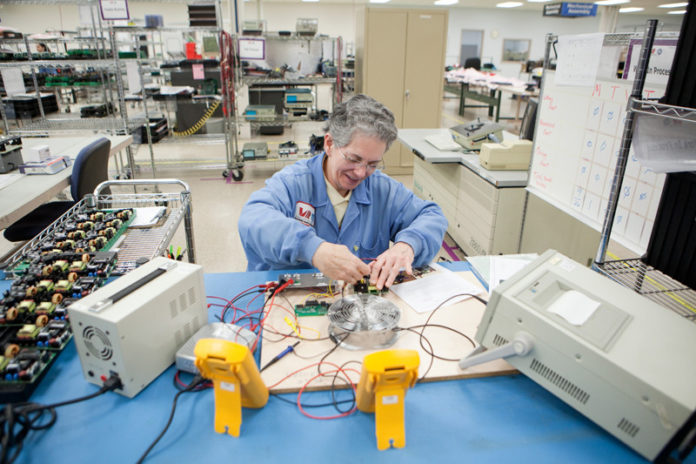
If John Shepard has his way, veterans from across the country could receive free technical training in the growing field of electronics diagnostics and assembly through a network of facilities across the nation.
Shepard has created Veterans Assembled Electronics, a home-based company in North Kingstown dedicated to providing that training. He has more than 30 years of experience in sales and management in the computer industry, co-founding two technology companies involved with firewalls and biometric identification. He is also a Vietnam combat veteran.
Shepard envisions training facilities in Indiana, Florida, Rhode Island, Colorado, California and Texas. Thus far he’s trained 19 people – most of whom are still working in electronics – and helps with job placement as well; the more experience, the easier the employment, he said. He also has the assistance of Absolutely American Corp., a placement organization from Altoona, Pa., that helps find applicants and assists them through employment. Career options include work in avionics, wireless or unmanned-vehicle electronics, as well as opportunities that exist in various geographic areas. His short-term goal is to train 60 veterans by December.
About four years ago, the semi-retired Shepard was coaching football at the Naval Academy’s prep school in Newport, where he had met recent graduates. “At the time I was looking to start another business that involved electronics assembly for products for the U.S. Department of Defense, and I thought we could use veterans to do that work.” But the work he had lined up was for older systems with near-obsolete parts, so his focus shifted on training veterans for working with the newest, state-of-the-art systems.
The timing was ideal and the need warranted. According to the U.S. Bureau of Labor Statistics, the unemployment rate of veterans in 2011 was 8.3 percent, not statistically different from the 8.7 percent rate in 2010. However, young male veterans 18 to 24-years-old who served during the Gulf War era had an unemployment rate of 29.1 percent in 2011, higher than that of young, male nonveterans, at 17.6 percent.
Training initially began in Rhode Island and has since spread to Ohio and Florida. In the Ocean State training is conducted at VR Industries in Warwick, an electronics manufacturer.
“We had to shift the way we were thinking … away from training only disabled veterans to training veterans generally,” he said, to create enough business to keep the company alive. Training is paid through several benefits provided by the Veterans Administration. There are no out-of-pocket expenses, as the G.I. Bill or Vocational Rehab benefits cover the entire cost of tuition and materials.
The training program was refined to meet the needs of the individuals. Some applicants had no electronics background while others received training in the military. That problem was resolved with the creation of two programs, “Basic Techs” and “Top Techs,” to better suit each student’s needs. The company also provides remote learning for one year after completion of the course.
The course features significant time with hands-on proficiency training. Subjects include printed circuit-board design, assembly and testing, electronic manufacturing and military- cabling assembly, to name just a few.
“There is a big push to have veterans leaving the military to go into education, but most of them leaving want to go directly to work,” Shepard said. “That’s why our program is six weeks, it’s very condensed,” he said.
For Frank D. Wouters, 56, the program has given him a career option and some hope for a stable and better future.
After joining the Army in 1976 he stayed for 12 years until badly damaging both shoulders, almost losing use of his left arm. Several surgeries helped but couldn’t correct his disabilities. In May 2010, the picture-framing company he worked for went out of business due to the recession and he found himself with no career options.
“I’m ecstatic about it,” said the Palm Bay, Fla. resident of Shepard’s new program. “It was an opportunity that no one else would have given me. Now I have a vocation.” •












